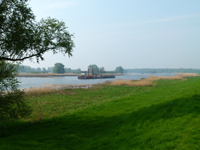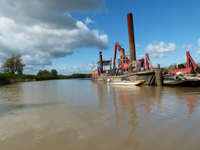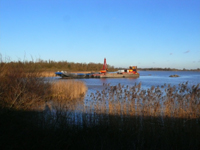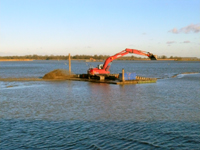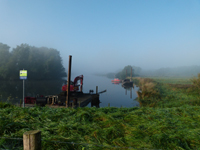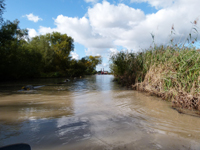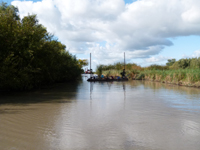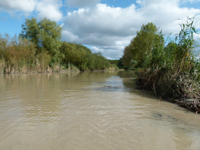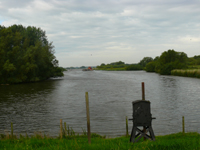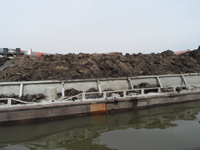Within the structure of the European Water Framework Directive (WFD), an integrated river basin management scheme for Europe, the Rijkswaterstaat (the powerful Dutch Ministry of Infrastructure and the Environment) has, between 2010 and 2013, been involved with the clean-up of the river beds within the Dordtse Biesbosch.
This was mainly necessary due to the aftermath of the Industrial revolution and the closure in 1970 of the Haringvliet (using a mixture of dams and sluices) causing a build-up of heavily polluted silt transported via the Rhine and the Maas settling as sediment in the Biesbosch and the Haringvliet.
Pollution
The polluted silt consisted mainly of heavy metals such as zinc, arsenic, copper, nickel, mercury, cadmium and lead together with poisonous chemicals such as PCB’s (Polychlorinated Biphenyls) and HCB (Hexachlorobenzene) (See also the section concerning the Cormorant colonies)
What was involved in the clean-up?
The clean-up involved either the removal of the polluted silt from the river beds and replacement with clean ground or the covering of the polluted silt with a clean layer of ground.
What has been cleaned?
The Dordtse Biesbosch is approximately 700 hectares in size, of which about 300 hectares consists of large, medium and small sized creeks. About 135 hectares of these creeks have, in the past 15-20 years, been cleaned by a natural process of sedimentation of cleaner silt. About 95 hectares have been cleaned by a combination of dredging and coverage of polluted silt. About 95 hectares have been cleaned-up exclusively by coverage of polluted silt, but because of the vulnerability of some natural areas a number of middle and small sized creeks have not been cleaned-up.
The clean-up has been carried out in an area covered by the Moerdijk bridges, the Spoorslootgriend (Reed beds on the edge of the railway), a part of the Lepelaarsgat (literally Spoonbill Creek), the larger creeks of the Zuid-Maartensgat, the Zeehondengat (literally Seal Creek), the Gat van Noorderels and the Noordediep and the middle sized creeks of the Zuidgat and a part of the Gat van Kielen. In total an area of about 165 hectare.
The end of 2013 will mean that most of the polluted river beds in the Dordtse Biesbosch should be cleansed of the pollution and that the river beds will begin again to show much healthier signs of life.
